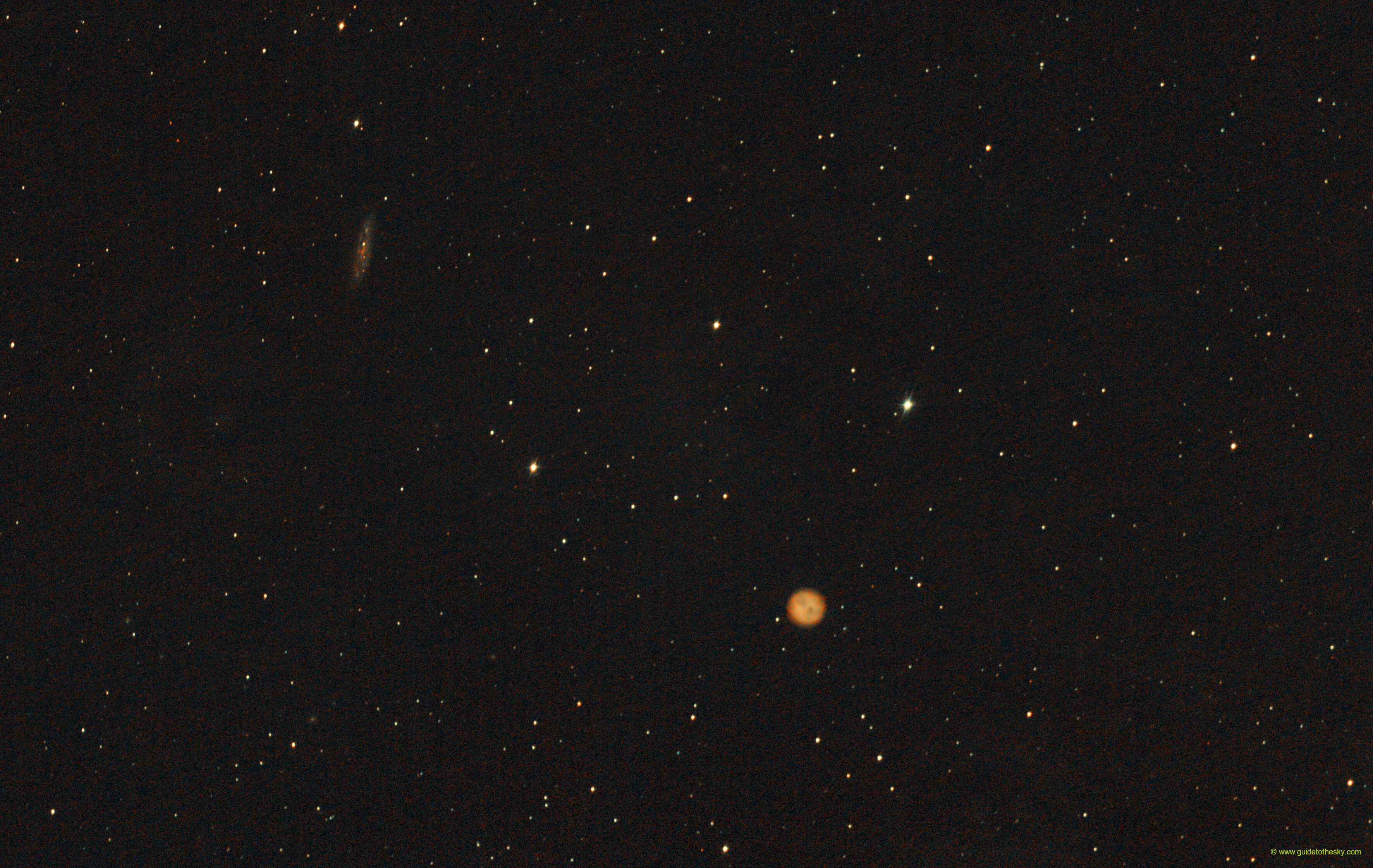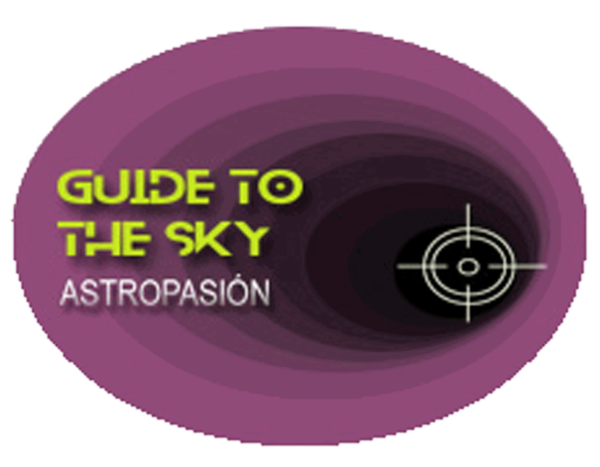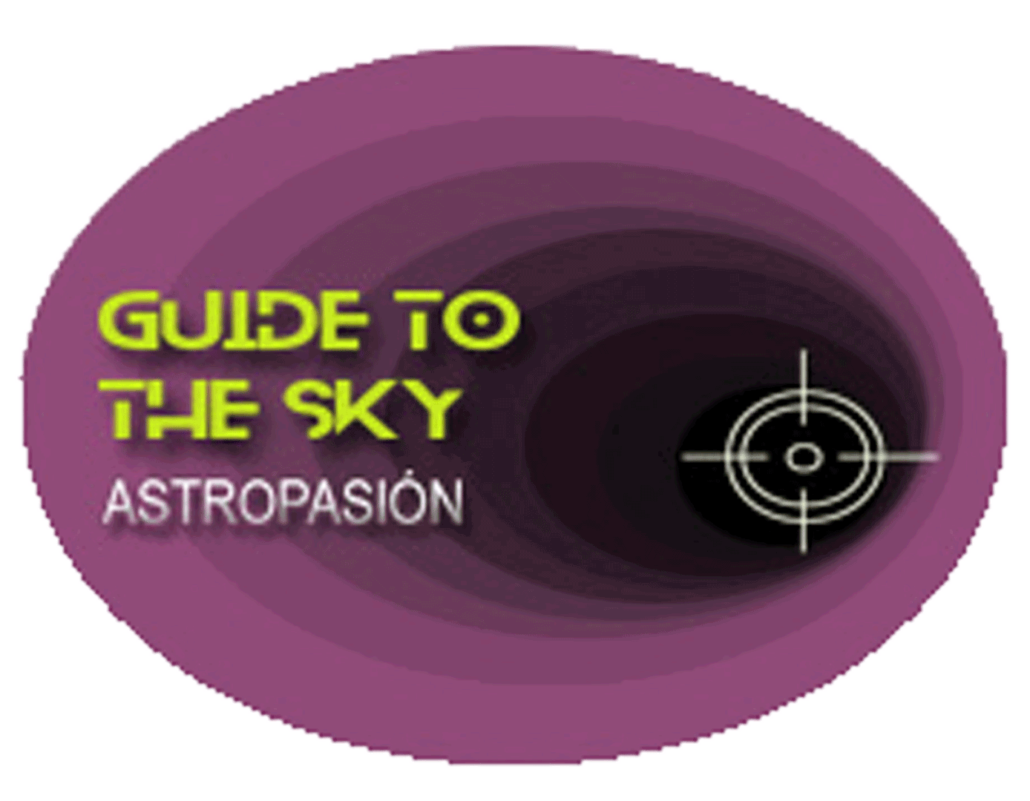Messier 97 - Ursa Major

Es una nebulosa planetaria, por tanto el remanente de una antígua estrella gigante, se cree que desprendió sus capas exteriores en repetidas expulsiones. El resultado de ello es una serie de anillos concéntricos, los cuales hacen que tenga esa apariencia de búho desde con nuestra línea de visión.
M 97 dista de nosotros {{ object[0].M97.mesDistances[0].dist }} {{ object[0].M97.mesDistances[0].unit }} y brilla con una magnitud similar a la 10ª.
M97 - Nebulosa del búho - en la IA
Messier 97 (M97), also known as the Owl Nebula, is a planetary nebula located in the constellation Ursa Major (the Big Dipper). Here's a summary of key information about it:
Key Features:
- Type: Planetary Nebula
- Location: Constellation Ursa Major
- Distance: Approximately 2,030 light-years from Earth
- Apparent Magnitude: ~9.9
- Diameter: Roughly 2.9 arcminutes (about 0.23 light-years)
- Central Star: A hot, blue-white dwarf star with a magnitude of about 16.
- Age: Estimated to be around 8,000 years old.
- Discovery: Discovered by French astronomer Pierre Méchain in 1781.
Description:
- The Owl Nebula gets its name from the two dark patches within its nebulosity that resemble the eyes of an owl.
- Planetary nebulae are formed when a low to medium-mass star reaches the end of its life and ejects its outer layers into space. These layers are then ionized by the hot core of the star, causing them to glow.
- The Owl Nebula is relatively faint and requires a good telescope to observe clearly.
Observational Tips:
- Equipment: A telescope with an aperture of at least 8 inches (20 cm) is recommended to see the owl-like features, though they can be glimpsed with smaller scopes under excellent conditions. A narrowband filter (such as an OIII filter) can significantly enhance the contrast and visibility of the nebula.
- Location: Ursa Major is a circumpolar constellation for observers in the Northern Hemisphere, meaning it's visible year-round. The best time to observe M97 is during the spring months when Ursa Major is high in the sky.
- Conditions: Dark skies are crucial for observing M97, as its faintness is easily washed out by light pollution.
Scientific Significance:
- Studying planetary nebulae like M97 helps astronomers understand the processes involved in stellar evolution and the eventual fate of stars like our Sun.
- The composition and structure of planetary nebulae provide clues about the chemical enrichment of the interstellar medium, as they return processed material from the star's interior back into space.
In essence, the Owl Nebula (M97) is a beautiful and fascinating example of a planetary nebula, offering a glimpse into the future of stars like our Sun.
Más información sobre Messier 97 en NASA/IPAC.
Mapa alrededor de Messier 97
Otros identificadores de M97:
"TIC 309863161" ,"WN B1111.8+5517A" ,"WN B1111.8+5517B" ,"NVSS J111443+550045" ,"NVSS J111450+550126" ,"Gaia DR3 843950873117830528","2EUVE J1114+55.0" ,"87GB 111154.0+551728" ,"AG82 135" ,"BWE 1111+5517" ,"CSI+55-11119" ,"EUVE J1114+55.0" ,"GCRV 6897" ,"IRAS F11118+5517" ,"IRAS 11119+5517" ,"LJHY 9" ,"M 97" ,"NAME Owl Nebula" ,"NGC 3587" ,"PK 148+57 1" ,"PN G148.4+57.0" ,"PN VV 59" ,"PN VV' 107" ,"PN ARO 25" ,"GB6 B1111+5517" ,"PSCz P11119+5517" ,"WD 1111+552" ,"SDSS J111447.71+550108.4" ,"SDSS J111447.70+550108.7" ,"2MASS J11144772+5501085" ,"Gaia DR2 843950873117830528","RX J111447.9+550106" ,

